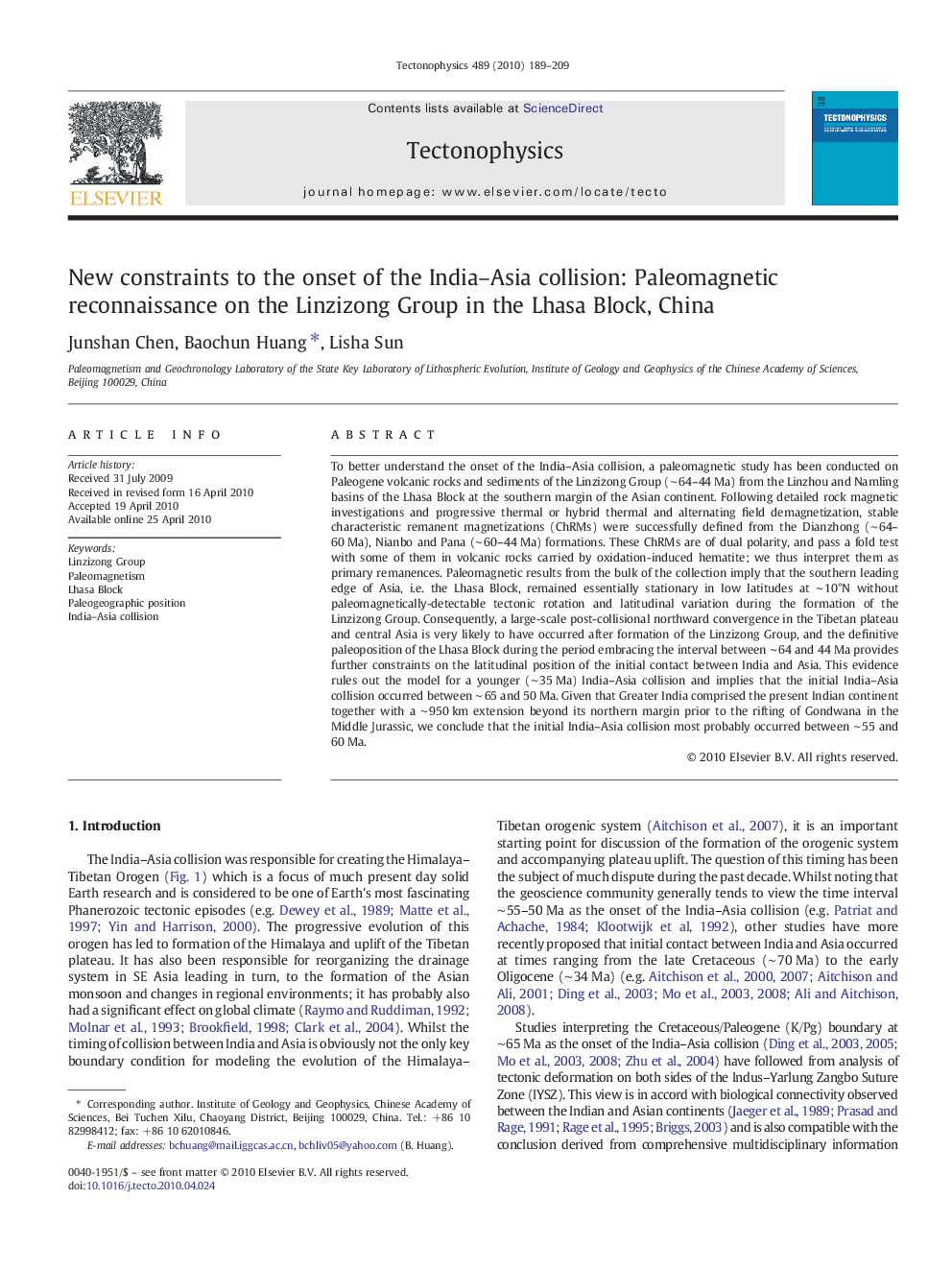| کد مقاله | کد نشریه | سال انتشار | مقاله انگلیسی | نسخه تمام متن |
|---|---|---|---|---|
| 4693538 | 1636866 | 2010 | 21 صفحه PDF | دانلود رایگان |
عنوان انگلیسی مقاله ISI
New constraints to the onset of the India-Asia collision: Paleomagnetic reconnaissance on the Linzizong Group in the Lhasa Block, China
دانلود مقاله + سفارش ترجمه
دانلود مقاله ISI انگلیسی
رایگان برای ایرانیان
کلمات کلیدی
موضوعات مرتبط
مهندسی و علوم پایه
علوم زمین و سیارات
فرآیندهای سطح زمین
پیش نمایش صفحه اول مقاله

چکیده انگلیسی
To better understand the onset of the India-Asia collision, a paleomagnetic study has been conducted on Paleogene volcanic rocks and sediments of the Linzizong Group (â¼Â 64-44 Ma) from the Linzhou and Namling basins of the Lhasa Block at the southern margin of the Asian continent. Following detailed rock magnetic investigations and progressive thermal or hybrid thermal and alternating field demagnetization, stable characteristic remanent magnetizations (ChRMs) were successfully defined from the Dianzhong (â¼Â 64-60 Ma), Nianbo and Pana (â¼Â 60-44 Ma) formations. These ChRMs are of dual polarity, and pass a fold test with some of them in volcanic rocks carried by oxidation-induced hematite; we thus interpret them as primary remanences. Paleomagnetic results from the bulk of the collection imply that the southern leading edge of Asia, i.e. the Lhasa Block, remained essentially stationary in low latitudes at â¼Â 10°N without paleomagnetically-detectable tectonic rotation and latitudinal variation during the formation of the Linzizong Group. Consequently, a large-scale post-collisional northward convergence in the Tibetan plateau and central Asia is very likely to have occurred after formation of the Linzizong Group, and the definitive paleoposition of the Lhasa Block during the period embracing the interval between â¼Â 64 and 44 Ma provides further constraints on the latitudinal position of the initial contact between India and Asia. This evidence rules out the model for a younger (â¼Â 35 Ma) India-Asia collision and implies that the initial India-Asia collision occurred between â¼Â 65 and 50 Ma. Given that Greater India comprised the present Indian continent together with a â¼Â 950 km extension beyond its northern margin prior to the rifting of Gondwana in the Middle Jurassic, we conclude that the initial India-Asia collision most probably occurred between â¼Â 55 and 60 Ma.
ناشر
Database: Elsevier - ScienceDirect (ساینس دایرکت)
Journal: Tectonophysics - Volume 489, Issues 1â4, 20 June 2010, Pages 189-209
Journal: Tectonophysics - Volume 489, Issues 1â4, 20 June 2010, Pages 189-209
نویسندگان
Junshan Chen, Baochun Huang, Lisha Sun,